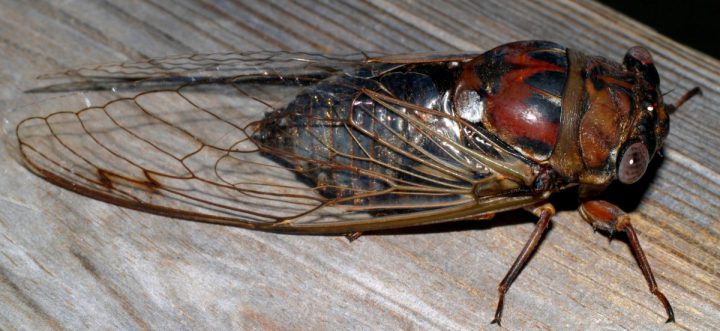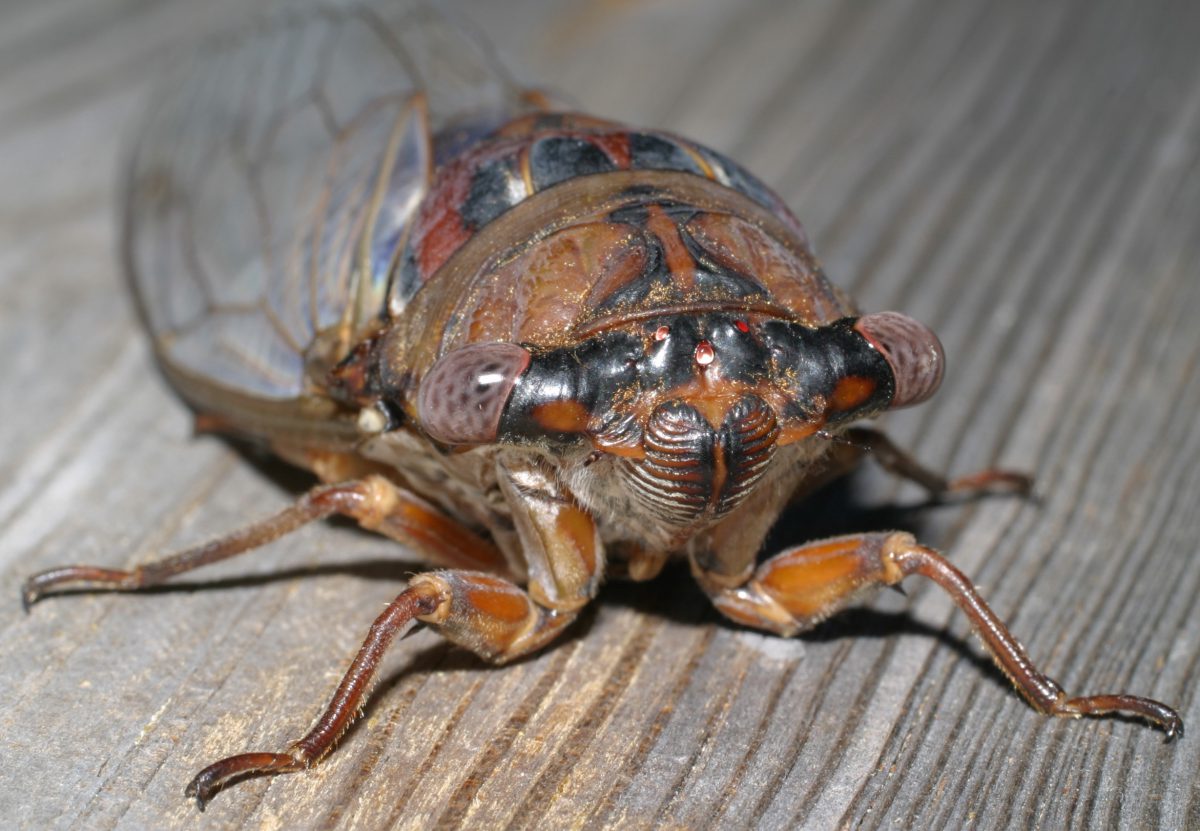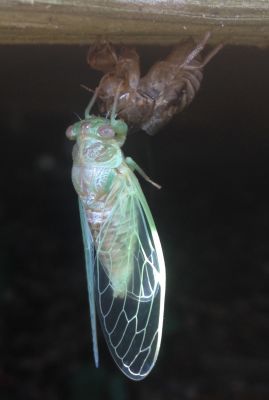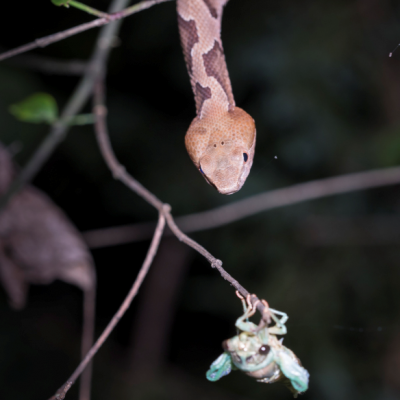
EMERALD ISLE — The setting sun was moments from embracing the horizon as its last rays of light burst across the sky, dripping a stain of yellow and gold down into the waters of Bogue Inlet. Off in the distance, to the right of the sun, huge clouds towered towards the heavens, giving the flat coast a mirage of mountains. Out over the sound, a long line of pelicans glided in unison as they headed to seek refuge for the night.
Only a few days from the official start of autumn, I stepped out onto the back deck of my house and tried to make my way through an invisible curtain of heat and humidity that would not part. It was as if I had walked headlong into a large, sticky spider web. I stared into a green wall of live oak and holly leaves just a few feet away, searching for the source of the sound. A sound of summer, that when silent, signals the changing of the seasons.
Supporter Spotlight
In mid-summer, the sound starts gradually and gains strength each day as new members join the chorus. We grow so accustomed to the noise that we almost don’t even notice it. Like a sound machine, it is nature’s lullaby, the call of the cicada, a white noise that can lull you to sleep on the soft breeze of a summer afternoon.

The dog-day cicada is a type of annual cicada that emerges from underground every year. They differ from the periodical cicadas that emerge after 13 or 17 years. These cicadas begin their life as an egg that is laid by the female in tree branches. She uses her rasp-like ovipositor to cut a trough into the bark where she places her eggs. Each female will lay more than 500 eggs in clusters of 15 to 20 eggs. After about six weeks, the eggs will hatch and the tiny nymphs will fall to the ground. Using their powerful legs, they will burrow into the ground where they will spend practically their entire life. Here, they will search for tree roots, then sink their needle-like mouth parts into the roots and extract the sap for sustenance. After about three years of digging around in the dark, the nymphs will emerge from their subterranean home when the ground temperature reaches around 64 degrees. Once on the surface, they search for the base of a tree and climb a few feet up the trunk. The insect will go through a metamorphosis of sorts and begin life as an adult. Clutched to the bark of the tree, the exoskeleton of the nymph will split open on the dorsal side and the soft, plump light green shape of a winged adult cicada will soon crawl free of its past life. The dry husk of their exoskeleton will remain clinging to the trees bark like a rock climber frozen in time. The whole process may take up to a few hours before the insect has hardened, changed colors and is ready to fly into the safety of the trees.
Dog-day cicadas are named for the time of year during which they are noisily conspicuous. The dog days refer to the hot days of summer when the Dog Star Sirius, which is part of the constellation Canis Major, rises at dawn together with the sun. It was once thought that the combination of Sirius, our brightest star, and the hot sun united to create the hottest days of the summer.

As the days of summer continue, more and more cicadas emerge, creating a sound that has been described as a commotion; roar; fracas; clamor; blare; clatter; uproar; cacophony; and a buzz. A choir of cicadas can crank the volume up to about 100 decibels, sounding as loud as a chainsaw or circular saw. This sound is created by the insect vibrating a membrane, called a tymbal, on the side of its abdomen.
Why all the racket? Well love, of course. It is the male calling out to attract a female. Their call is heard most often during the day and seems to peak in the mornings and evenings. At times, their call will reach a crescendo and quickly taper off before cranking up again. This is because the muscle used to contract the tymbals gets fatigued and needs a short breather.
Supporter Spotlight
During a recent bike ride, I came along a section of road where a number of cicadas were littered on the pavement. I picked up one of the black creatures, which were less than two inches long, to examine it. Dark green color was mixed in on the top of its head and thorax. Cicadas will have a few color variations of green, brown and almost all black. Its clear wings completely sheltered the abdomen. I cupped the cicada in the palm of my hand and looked closely to see if it was still alive. I could easily see its two large compound eyes and could also make out their three simple eyes in between the big bug eyes. They only live a little more than a month while above ground with their only task to mate and lay eggs. Why they were all on the ground and not in the trees I do not know. Maybe they had just mated. Maybe they were females attracted to the sound of lawn mowers and leaf blowers that had recently manicured the lawns along the street. They have been known to be enamored with lawn equipment. So I tossed the one in my hand into the air to see if it was still alive and it took off with a clattering sound and shot into the trees like a wayward bottle rocket.

Because of their large numbers in the canopies of trees, cicadas have long been mistaken for and misidentified as locusts, which are a type of grasshopper. Cicadas are more closely related to crickets and have even been called “tree crickets.” They are also referred to as the “harvestfly” as they are present when crops are ripe for harvest in late summer and early fall. Their mass emergence over the course of a couple of months ensures that some will survive predators due to “safety in numbers”. Exposed in the open, cicadas are vulnerable to predators, the gift of flight and camouflage is its only defense. Birds will prey on them as will a wasp appropriately called the “cicada killer.” The most interesting predator of all is one you wouldn’t expect, the copperhead snake. Cicada nymphs emerge during the summer nights right around dark and continue to come out of the ground for a few hours. Copperheads have learned to search fields and lawns that are fairly open but contain a few large trees. As the nymphs crawl toward the trees to climb up the tree trunks, the copperheads are lying in wait. They will eat the nymph and the freshly emerged adult before it can fly. Because of the abundance of nymphs, numerous copperheads might congregate around a single tree. In Texas this past summer, 33 copperheads were observed in one lawn feeding on the cicada nymphs. After about midnight, the nightly emergence is over and the copperheads return to the cover of the woods.
Cicadas have long been a symbol of rebirth, immortality and change. As long ago as 200 BCE, jade carvings of cicadas were buried with the dead to aid in resurrection. When the Greek mythology character Tithonus was given the gift of immortality by Zeus, it did not include eternal youth. Thus he continued to age into a shell of a man and was eventually transformed into a cicada. In folklore, cicadas’ presence signals that fall is fast approaching and that the first frost will occur in six weeks.
Now, a few weeks have passed since the official arrival of fall and the cool mornings play the discernible silence of the cicadas. I will miss the cicadas until next year when we all can:
“Feel the freshness of the air; how pretty and pleasant it is; how it echoes with the summery, sweet song of the cicadas’ chorus!”
— “The Phaedrus,” by Plato








